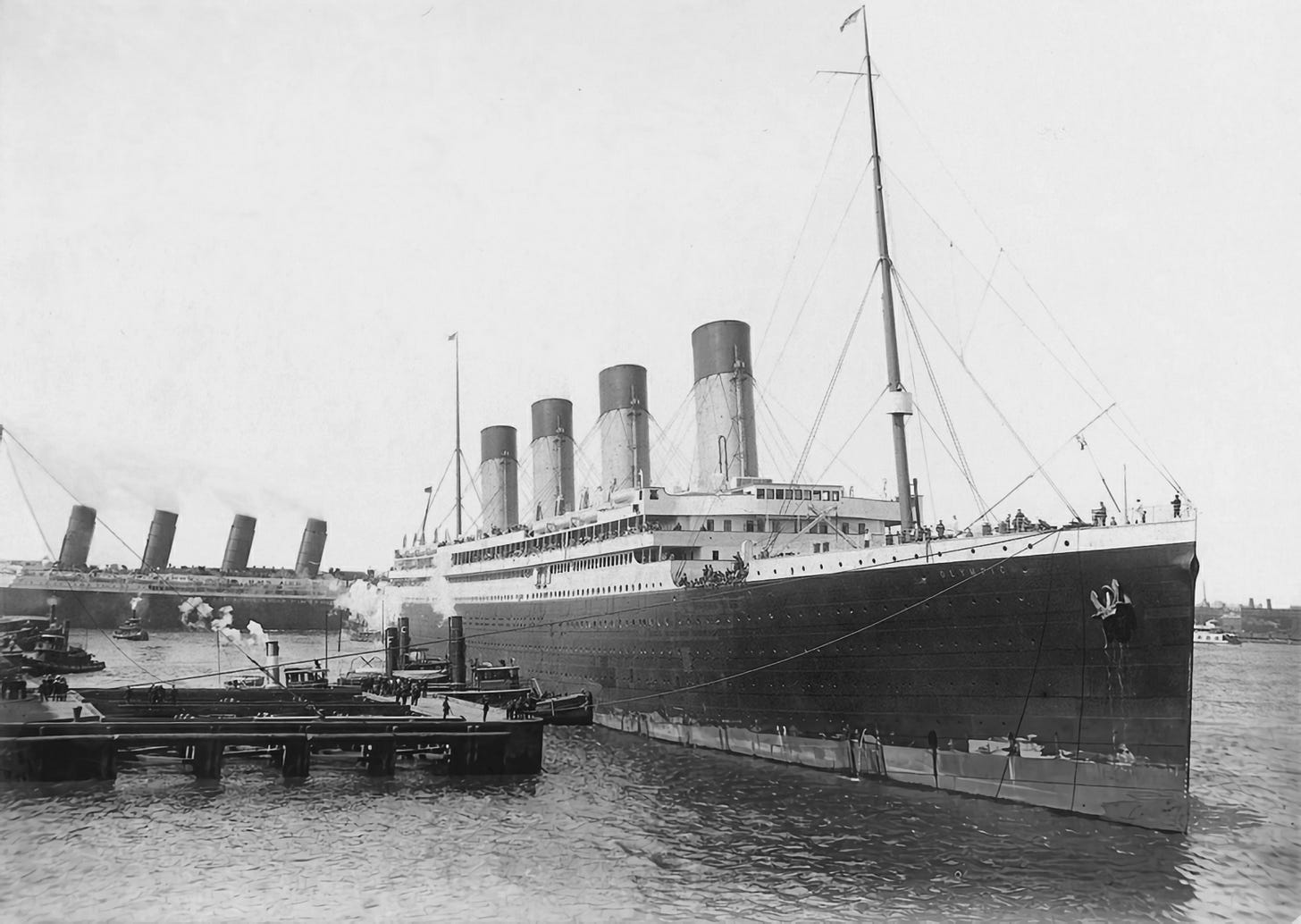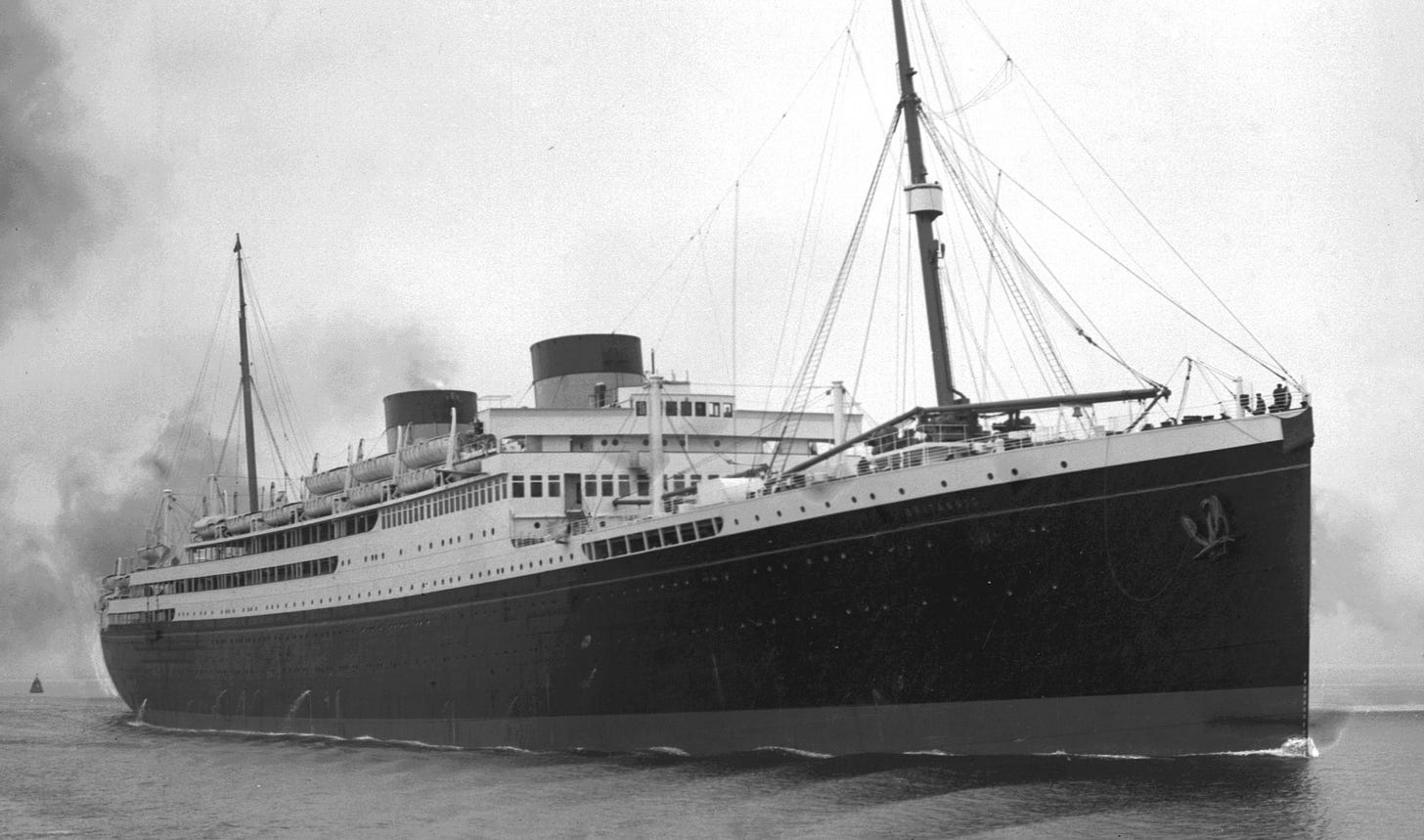What happened to White Star Line?
The legendary brand lives on aboard Cunard's fleet today, but why?
There was a time when White Star Line was one of Cunard’s most significant rivals. Established by John Pilkington and Henry Wilson in 1845 as an Australian immigration line, the brand was later acquired by Thomas Henry Ismay in the 1860s.
Ismay re-established White Star Line as a transatlantic steamship brand under his Oceanic Steam Navigation Co. During periods between 1871 and 1933, White Star was a formidable competitor on the prestigious transatlantic service, eclipsing Cunard several times.
Three of its ‘Big Four’ liners: the Baltic, Cedric, and Celtic, as well as the iconic Olympic and Titanic, were considered among the largest and most tastefully appointed liners of their era.

White Star’s main advantage was its exceptionally high-quality customer service. By the turn of the 20th century, the brand’s first-class appointments, on their express liners, were considered among the best at sea.
Even second-class and steerage accommodation maintained a superior standard compared to many rival liners at that time. I’ve touched on a few of the ships that this was true of, here and here.
However, the impact of the Great Depression in the early 1930s severely affected both Cunard and White Star Line. To avoid collapse, both companies sought support from the British Government.
The government agreed to provide aid on the condition that the firms merge. Negotiations began in 1933, leading to their union in 1934 to form Cunard-White Star Line.
The Impact of the Merger
The merger created a revitalised brand, and under the direction of Sir Percy Bates, Cunard maintained majority control.
But the new company found itself with an excess of tonnage during a period of low transatlantic shipping demand. Consequently, many older White Star and some Cunard liners were retired in the years following the merger.
These included the White Star liners Olympic, Majestic, and Homeric, as well as Cunard’s Mauretania. However, newer White Star liners, such as the Britannic and Georgic, were retained.

The new company quickly made its mark, launching the RMS Queen Mary in 1934, which entered commercial service in 1936.
Queen Mary had been ordered by Cunard well before the merger; however she was delayed due to the impact of the depression. Government funding post-merger allowed her to be completed. They also built a second Mauretania and began construction of the RMS Queen Elizabeth, Media, and Parthia, as well as ordering the dual-purpose Caronia.
Following World War II, Cunard acquired White Star’s remaining interest in the business, reverting to the sole name of 'Cunard Line'.
The Resurrection of ‘White Star’
From the 1950s to the 1990s, the White Star name was confined to the halls of history. But when Carnival acquired Cunard in 1998, they embarked on a strategy to revitalise the Cunard brand and, following the tremendous success of James Cameron’s movie ‘Titanic’, looked to the White Star brand once again.
This revitalisation involved realigning Cunard’s fleet and onboard style to evoke the historic transatlantic liners of bygone eras. In 1999 the QE2 was refurbished, while Vistafjord was updated and renamed Caronia. And with QM2 due to enter service in just a few years, Cunard significantly reinvested in its onboard service offering.
It was at this time that the long-dormant White Star name was reintroduced. In a clear nod to the White Star Line’s historically exceptional service, Cunard reinvigorated the brand by establishing the White Star Academy.
This exclusive training academy teaches new recruits how to deliver Cunard’s unique style of service, which became famously known as White Star Service.
Graduates are proudly presented with a White Star Pin upon completion, which is worn as a symbol of their commitment to maintaining the lofty standards of a legendary name in maritime history.


Terrific history - leads me to understand the White Star reference on Cunard today